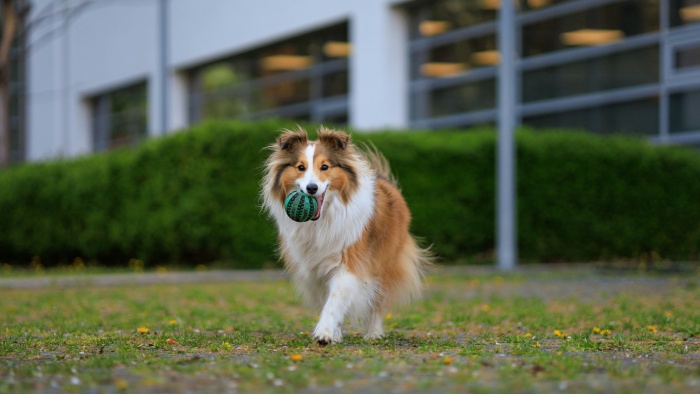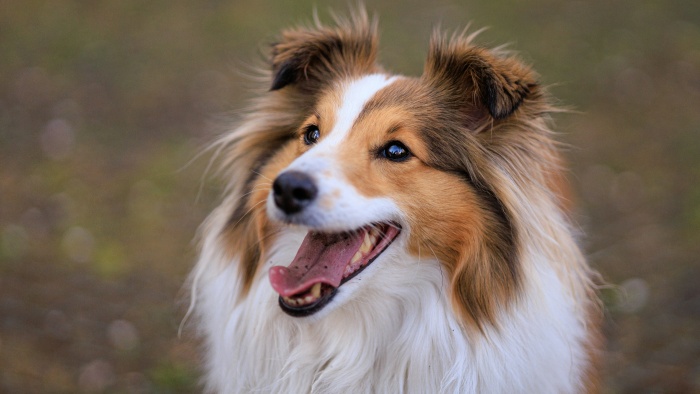Sheltie Dog:What You Should Know

Though they’re small in size, the sheltie dog breed boasts significant intellectual prowess, which renders them exceptionally receptive and straightforward to train.
However, do Shelties tend to bark excessively? What’s the recommended grooming frequency? And are they compatible with children? Below are 10 critical facts about Shetland Sheepdogs.
Shelties are considered a small breed
According to the American Kennel Club, Sheltie dogs stand 13-16 inches (33-41 cm) tall at the shoulder and weigh between 15-25 pounds (7-11 kg). But why are these precise measurements?
Establishing breed standards is crucial for professional breeders to consistently produce the Shetland Sheepdogs we adore. Any deviation from this strict genetic blueprint could lead to the loss of the Sheltie breed as we know it. Imagine that!
Interested in the exact appearance and breeding criteria for Shelties? Dive into the Shetland Sheepdog Breed Standard and discover the extensive effort involved in breeding purebred dogs.
Shelties are not just small collies
While the Rough Collie, famously known through Lassie, is a widely recognized breed, Shelties often get dubbed as “Mini Lassie.”
However, Shelties aren’t merely downsized versions of Rough Collies. Understanding this misconception requires a glimpse into the Sheltie’s breeding history.
The breed originated from a Scandinavian Spitz type brought to Scotland in the 1700s, laying the foundation for today’s Sheltie.
Subsequent extensive crossbreeding with Collies lent them a Lassie-like appearance. Further down the line, the breed was miniaturized through additional crossings with Pomeranians, and possibly even with Papillons and Corgis.
Initially, Shelties were presented in dog shows as Shetland Collies due to their striking resemblance to Rough Collies. Yet, their lineage is distinctly different, prompting a change to the name Shetland Sheepdog to better represent their unique heritage.
Shelties sport a double coat
Maintaining your pet’s appearance involves crucial grooming practices. Mastering the grooming of your Sheltie involves removing the loose undercoat and detangling the top coat.
Neglecting grooming duties can lead to consequences! Your furnishings might soon mirror the look of your pet, and your dog could start showing you some serious side-eye until you address their coat issues.
Committing to weekly grooming sessions is significant and best fits individuals who are detail-oriented, caring, and don’t fuss over some fur on their garments.
Opting for a professional groomer? Ensure the expense fits into your budget for regular appointments and maintain consistency with the groomer to help your Sheltie adjust to them. A new groomer can be a daunting experience for your dog, causing them stress (we’re talking about the dog’s comfort, of course).
Shelties rank as the 6th most intelligent dog breed
Shelties truly are brilliant! Each one is unique, yet they share a remarkable level of focus that sets them apart from most breeds. Ranked as the sixth most intelligent dog breed globally and the smartest among small breeds, what does this intelligence mean for owners?

It means they’re quick learners, often grasping new commands after just a few tries, and they shine in trick and agility training. Starting training early in their puppy years is not only fruitful but also extremely enjoyable. After engaging with a Sheltie, other breeds may seem less responsive by comparison.
Owning a smart Sheltie comes with its set of duties, requiring you to keep them engaged: daily walks enriched with varied scents, leash-free time, interactions with other dogs and people, and indoor activities.
Shelties may not be typical fetch enthusiasts, but their herding instinct is strong. You’ll find they can be encouraged to chase and guide anything moving, demonstrating their unique personality and preferences in play.
Shelties serve as innate alert dogs
Originating from their role as working dogs on the Shetland Islands, Shelties were bred to exhibit traits such as alertness, intelligence, sharp vision, and a tendency to bark, all of which contribute to their effectiveness as alert dogs.
These characteristics persist in Shelties today, driving them to safeguard their homes against potential threats, such as unfamiliar visitors, neighboring dogs, wandering cats, and yes, the inevitable mail carrier.
Shelties are not guard dogs—they won’t engage in physical attacks. Instead, as alert dogs, they significantly enhance your awareness of any unusual activity, persistently signaling until reassured. A firm, concise “SHHH!” in response to their barking, applied consistently, can help moderate this behavior.
To mitigate their propensity to alert you to every minor disturbance, it’s beneficial to engage them with various mental challenges.
Morning activities are particularly beneficial. Offering them edible and play chews can also serve as effective distractions.
Explore innovative ways to assign your Sheltie household “tasks,” preventing them from self-appointing as Feline Monitors and Auditors of Every Sound, which could lead to excessive and high-pitched barking.
Shelties are expressive dogs
Beyond their instinctual alert barking, Shelties have a way of making various sounds that resemble singing, chatting, and howling.
What’s particularly charming is that these vocalizations are often directed towards their owners, leaving little doubt they’re attempting to communicate with you.

The vocal tendencies of Shelties vary from one to another. By the standards of the breed, some may be comparatively quiet, while others are quite the conversationalists.
One might even feel compelled to vocalize in response to specific household sounds, ensuring you’re alerted to events like a ringing phone.
Shelties boast a wonderful temperament
Overall, Shetland Sheepdogs are typically affectionate, loyal, sensitive, and loving companions. While each dog possesses a unique personality, the general temperament of the Sheltie breed exudes a sweetness that’s easily recognizable in each individual you encounter.
This agreeable temperament is a blend of their innate submissiveness, intelligence, and eagerness to please. They tend to shadow your every move, all while serving as vigilant guardians against such formidable threats as the stealthy possum lurking near the porch. Their behavior is characterized by being clever, watchful, and responsive, even to events like nocturnal thunderstorms. Truly commendable traits.
However, it’s important to note that an anxious Sheltie may display timidity. This nervousness often stems from insufficient socialization in their early weeks of life.
During the critical socialization period of 4-10 weeks, a puppy’s fear response is notably low, leading him to boldly explore new environments with little concern for danger.
This phase offers ample opportunity for bonding with humans, who might otherwise seem intimidating (considering humans are significantly larger, omnivorous beings).
A puppy that does not learn to trust humans during this window may remain perpetually wary of unfamiliar people. This can particularly complicate interactions with children, who, as one might agree, are among the most peculiar and unpredictable beings.
Shelties require daily activity
Every dog enjoys a good run, and Shelties, originally bred as active herding dogs, necessitate 30-60 minutes of outdoor activity daily. It’s important to provide your Sheltie with plenty of time to explore, sniff around, meet other dogs, and enjoy some leash-free moments.
Moreover, engaging your Sheltie in indoor herding games can offer additional mental and physical challenges. If you’re the owner of more than one Sheltie, you’re likely familiar with their energetic bursts known as Zoomies. Shelties delight in engaging in Zoomies.
You can start a game of Zoomies with a playful stance, then proceed to chase and weave around your home with them, testing your stamina as much as theirs. This is a literal workout, guaranteed to tire you out as much as them.
Given their bursts of energy, Shelties should be given every opportunity to expend it. However, they’re not suited for extensive hiking or lengthy runs like some other breeds. In an anecdotal instance, a Sheltie might decide it has reached its exercise limit mid-adventure, opting to firmly sit until promised a reward for its efforts upon return.
Shelts require spaying or neutering
On a gravely serious note, each year, the U.S. sees the euthanization of 3 million unwanted dogs, largely due to pet owners’ avoidance of spaying or neutering their pets.
“Backyard breeding” encompasses both accidental and intentional breeding by non-professional breeders. Often motivated by profit from puppy sales or the allure of cuteness, this contrasts sharply with professional breeders, who aim to produce exemplary dogs that may achieve champion status and uphold breed standards.
The distinction is clear: professional breeding occasionally produces pets as a secondary outcome of striving for champion status, whereas backyard breeding primarily seeks profit from the sale of pets, contributing to the overpopulation crisis.
This includes the production of “designer” dogs bred specifically for the pet trade, disregarding the millions of dogs in shelters awaiting adoption or facing euthanasia.
Given the staggering number of unwanted dogs and the ethical dilemmas posed by non-professional breeding, the case for spaying or neutering Shelties becomes even stronger, especially considering the challenges and responsibilities associated with managing a pet’s heat cycle.
Shelties have a lifespan of 12-13 years
Generally, smaller dog breeds enjoy a longer lifespan compared to their larger counterparts, with some small breeds outliving the larger ones by a significant margin.
By maintaining a healthy diet, dental care, and up-to-date vaccinations for your Sheltie, you can help ensure a life expectancy of 12-13 years.
Ideal living environments for Sheltie dogs
To ensure the well-being and happiness of Sheltie dogs, providing an ideal living environment is crucial. Shelties thrive in spaces where they can exercise their natural behaviors, such as running, playing, and exploring. A home with a securely fenced yard is highly beneficial, allowing them to enjoy the outdoors safely.
Indoors, Shelties appreciate a calm and stable environment. They are sensitive to stress and changes, so maintaining a routine and peaceful household contributes to their emotional health. Given their intelligence and need for engagement, access to a variety of toys and puzzle feeders can help keep their minds active.
For city dwellers, regular visits to dog parks or doggy daycare can offer the socialization and physical activity Shelties need. However, it’s important to ensure these experiences are positive, as Shelties can be reserved around strangers and unfamiliar dogs.

When it comes to walks and outdoor adventures, using a harness is recommended. Harnesses provide better control and distribute pressure evenly across the chest, reducing the risk of neck injury and enhancing comfort during walks.
This is especially important for a breed as active and energetic as the Sheltie, ensuring their safety and enjoyment while exploring the world around them.
Conclusion
Understanding and catering to the specific needs of a sheltie dog is essential for their overall health and happiness.
From their impressive intelligence and distinctive temperament to their grooming and exercise requirements, each aspect of care contributes to a fulfilling life for these remarkable dogs.
By providing a secure and stimulating environment, whether through a home with a yard or regular adventures with a suitable harness, owners can ensure their Sheltie thrives.
Adhering to recommended health practices, including spaying or neutering, further supports the welfare of the breed and helps mitigate the issue of unwanted pets.
Ultimately, the joy and companionship a Sheltie brings to a household are immeasurable, making every effort to meet their needs well worth it.

